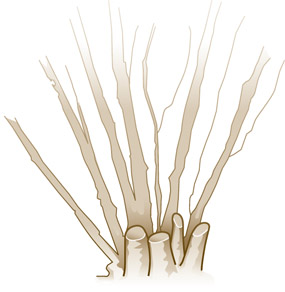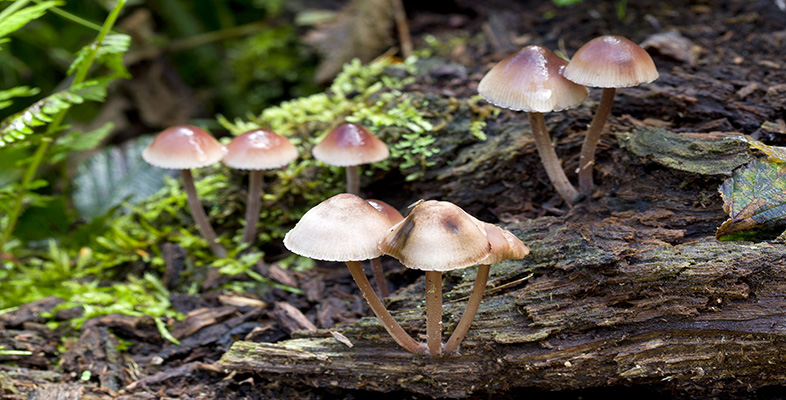1.5 Woodland management
Woodland in the UK has been managed for centuries.
The use of coppicing is where a tree or shrub is cut back to the base at ground level, allowing new shoots to develop. These coppice stools (Figure 5) were used to provide a regular supply of twigs and branches for fuel (e.g. charcoal), fodder, or for making fencing hurdles or baskets.
Trees were also selected and felled for their timber, e.g. to provide planks for building.
Pollarding is similar to coppicing, but the tree is cut at eight to twelve feet from the ground. This practice was often used in wood pasture (open areas where grazing animals co-exist with trees). Cutting at this greater height protected the new shoots from browsing.
Permanent open spaces in woodlands are created as rides and glades. A ride is a wide route through the wood, often unsurfaced, that is managed as a tree-free area and is useful for access and timber extraction. A glade is a woodland clearing kept free of trees by grazing or mowing. Temporary open areas are also created by coppicing patches of the wood in rotation.

Active management has been a key factor in developing the character of the UK's woods. Allowing the penetration of light through coppicing, glades and rides encourages high numbers of the more charismatic woodland wildlife, ranging from spring flowers to butterflies. However, there is debate among conservationists as to whether this type of management is appropriate for all woods and all species. There are many species that prefer shadier, cooler and moister conditions, but these tend to be overlooked species such as beetles, mosses and fungi.
Question 3
Coppicing is one way of managing woodlands. What is the effect of coppicing?
Answer
It creates a variety of habitats within the wood. It lets light onto the woodland floor, encouraging ground flora such as bluebells and yellow archangel (Lamiastrum galeobdolon), and butterflies such as the silver washed fritillary.
